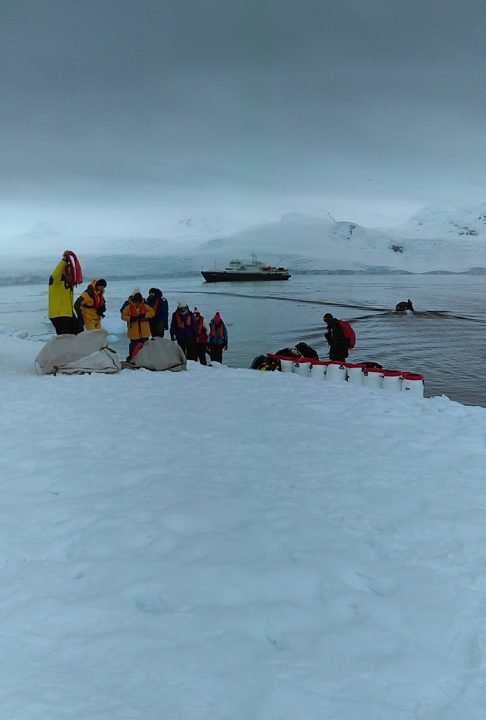 Baby, it’s cold outside as passengers and crew step ashore. Go to allpointbulletin.com to see more photos of Margot’s journey. All photos by Margot Griffiths
Baby, it’s cold outside as passengers and crew step ashore. Go to allpointbulletin.com to see more photos of Margot’s journey. All photos by Margot Griffiths
By Margot Griffith
Our voyage to Antarctica begins where the world drops off. In the harbor of Ushuaia, the southern-most city on earth, where mountains rise like knife points in the Argentinean sky, the retired Dutch research vessel Plancius sits at anchor. Much depends on this being a skookum ship.
Ushuaia is 30 hours and four flights from Vancouver. Child’s play in the face of crossing the Drake Passage – 48 hours on the world’s roughest seas. There are 110 passengers from around the world on board for Oceanwide’s expedition onto the Antarctic Ice. It’s November – early summer – when massive icebergs are beginning to calve as temperatures begin to rise. But even in summer, the weather is always the critical factor facing any Antarctic expedition.
Plancius’ Russian captain delivers the first weather report. “The Drake can be a lake or it can be a shake, and our crossing will not be a lake.” The ship is heading due south at 20 knots with prevailing winds from the west at 35 knots. The waves are 12 feet and getting higher. The ocean’s deep roiling currents, unchecked by any land mass at 55 degrees south latitude, also power the waves. Several hours into this marine rodeo, the captain closes the decks. The view through my porthole swings from a wall of grey sky to a wall of green water. Then, out of nowhere, we have a following sea and the rocking takes a new twist. I’m one of the lucky ones; I don’t get seasick. Some are horizontal for the duration.
Also following the ship are petrels, wandering and southern albatrosses and the tiny Jesus bird, so light it can walk on water. Most beautiful is the sooty albatross. She meets my eye with her exquisite white-rimmed eye, soaring on wings that arch like a ballerina’s arms.
The sun is dazzling as we navigate out of the Drake and the white continent materializes in near mythic grandeur. It is too rough to land, but we cruise through a sea avenue of giant icebergs – some as longer than city blocks and higher than three-story buildings. In the Lemaire Channel, our ship navigates a passage so narrow it feels like threading a needle. She’s skookum and proving the benefits of a small ship. Standing on the foredeck, I don’t feel the cold. Temperatures hover around freezing. But the wind picks up again, preventing us from boarding the Zodiac inflatables for a close-up of the massive icebergs, and from landing on the continent. Still, the morning is glorious and the feeling on board is euphoric.
The next day it is snowing but the wind is good and we climb down the narrow rope stairs off the starboard side to the Zodiacs. Now we are close enough to reach out and touch the ice as we cruise by. Most incredible is its color. The shades of blue – from light aqua to deep turquoise – are created by millions of years of snow that has compressed under its own weight. The compression causes air trapped in the ice to escape, resulting in less reflection of light. The bluer the ice, the older it is. The krill, the first link in the richest food chain on earth, is pink. Long ribbons of it wave in the crystal blue water. It draws whales from northern latitudes and sustains penguins, whose colonies are laced with “pink highways” of guano.
When the following day dawns, conditions are perfect and we set foot on continental Antarctica at Neko Bay. In the brilliant sun, Gentoo penguins patiently traverse the ice on their pink highways, collecting pebbles to build their nests. On some indecipherable cue, one begins to call, setting off a Greek chorus of yodelling that stops as suddenly as it begins, and they get about their business again. There’s nobility in these flightless birds. The predatory gulls work in tandem: one distracting the penguin guarding the nest, the other diving in for the plunder. Cracked eggs lie on the ice, testament to the struggle to breed in the world’s harshest conditions. Across the bay, ice is creaking in the early summer thaw, and then comes the rifle-shot of calving and the thunderous roar of the ice breaking free to form a berg.
In the days that follow, there are more Zodiac cruises and landings. On a misty morning in Melchior Bay, we glide into a blue fantasia; our boats surrounded by surreal ice sculptures carved out by wind. We spot many Weddell seals with their appealing puppy faces, in sharp contrast to the deadly 12-foot leopard seal we see stretched out on an iceberg. A threat to humans, this apex predator has a long, muscular body, a massive reptilian head and jaw, and a mouth permanently fixed in a malevolent grin.
In light of this menace – not to mention icy water – the collective insanity of 30 passengers taking a “polar plunge” is the nuttiest aspect of our voyage. As they blunder in, some so stunned by cold they have to be rescued, the ship’s doctor stands by. Many of these same people then camp overnight on the ice with no tents. Dig yourself a coffin in the snow and carry on.
Though early summer is not the season for whales, we encounter minkes, humpbacks, right whales, and a pod of 30 orcas that see us off as we leave Antarctic waters and enter the Drake Passage again. Going home, it’s still a shake.
We have been sailing in Western Antarctica – a series of mountain belts that are an extension of the South American Andes, and composed of volcanic and intrusive igneous rocks.
The landscape has been majestic with mountains towering all around us. Eastern Antarctica is a flat plain of ancient pre-Cambrian rock – the earliest era of geological history – thought to be up to three billion years old.
A highlight of this journey has been the international expedition crew – all of them experts in their field, each holding advanced degrees. Shipboard lectures cover mammals, birds, marine life, geology, ice formation and, most importantly, the global political efforts to preserve Antarctica, the last untouched continent.
Info: oceanwide-expeditions.com.
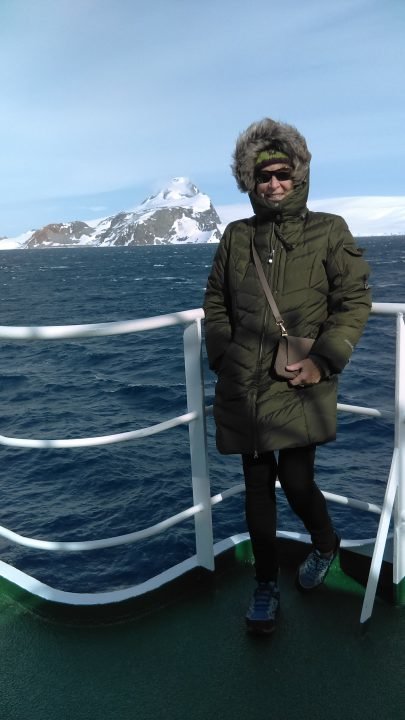 Photo by Margot Griffith
Photo by Margot Griffith 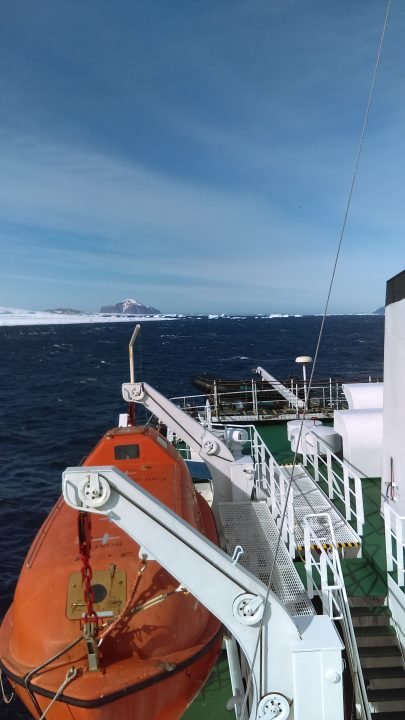 Photo by Margot Griffith
Photo by Margot Griffith 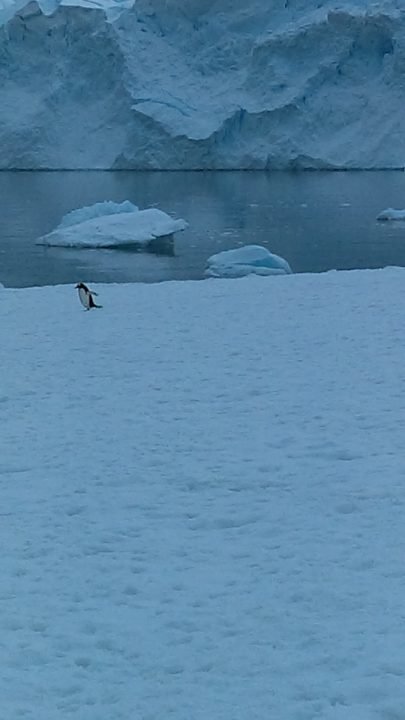 Photo by Margot Griffith
Photo by Margot Griffith 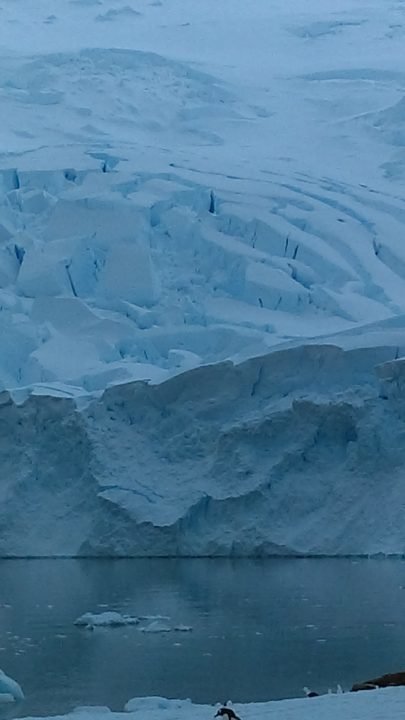 Photo by Margot Griffith
Photo by Margot Griffith 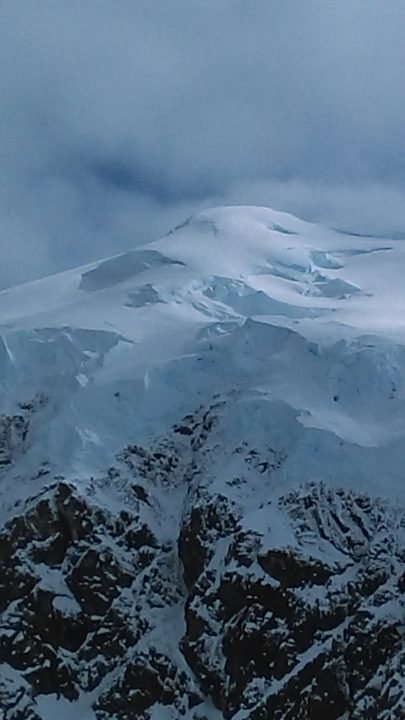 Photo by Margot Griffith
Photo by Margot Griffith 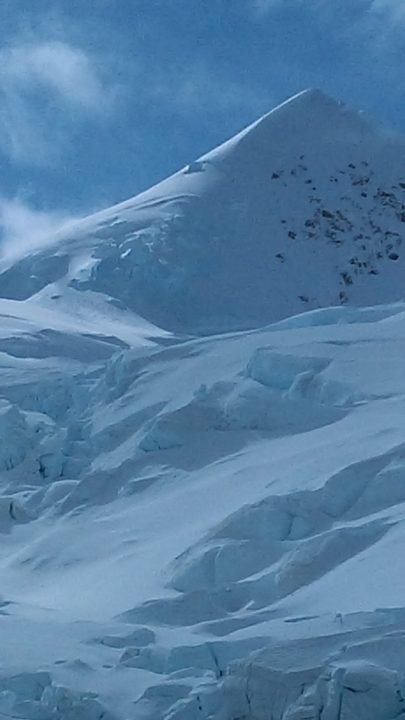 Photo by Margot Griffith
Photo by Margot Griffith 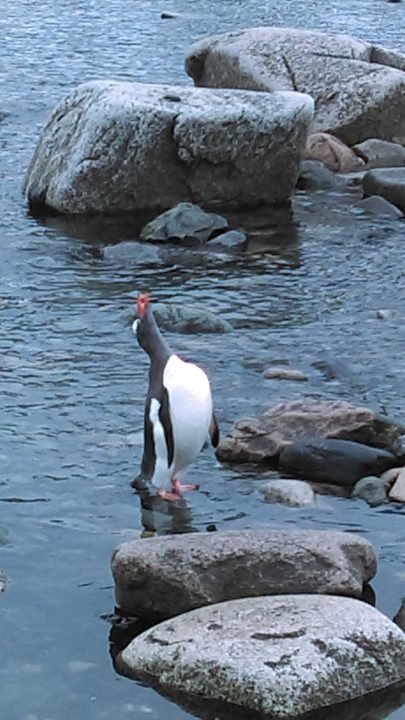 Photo by Margot Griffith
Photo by Margot Griffith 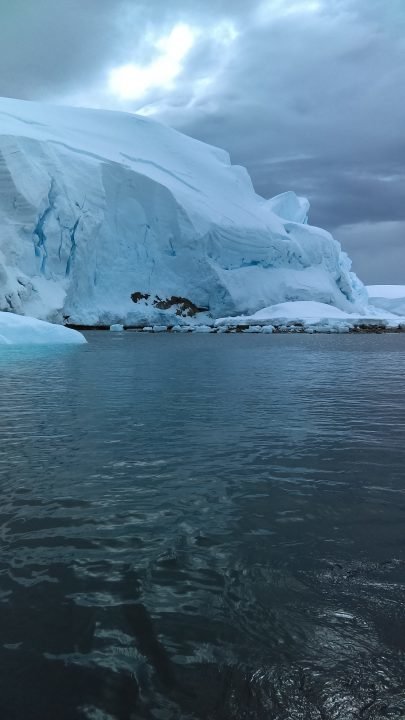 Photo by Margot Griffith
Photo by Margot Griffith 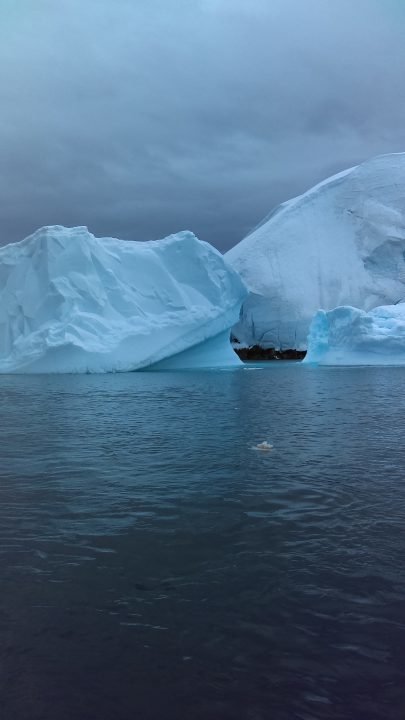 Photo by Margot Griffith
Photo by Margot Griffith 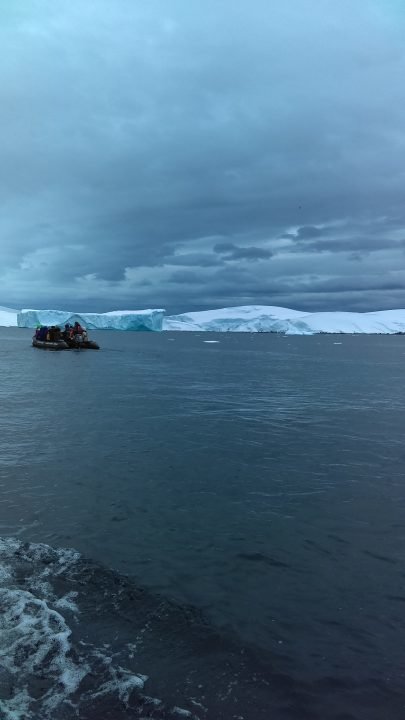 Photo by Margot Griffith
Photo by Margot Griffith 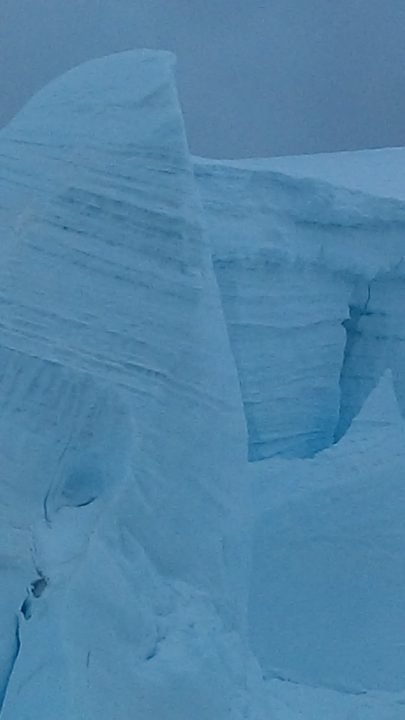 Photo by Margot Griffith
Photo by Margot Griffith
Comments
No comments on this item Please log in to comment by clicking here